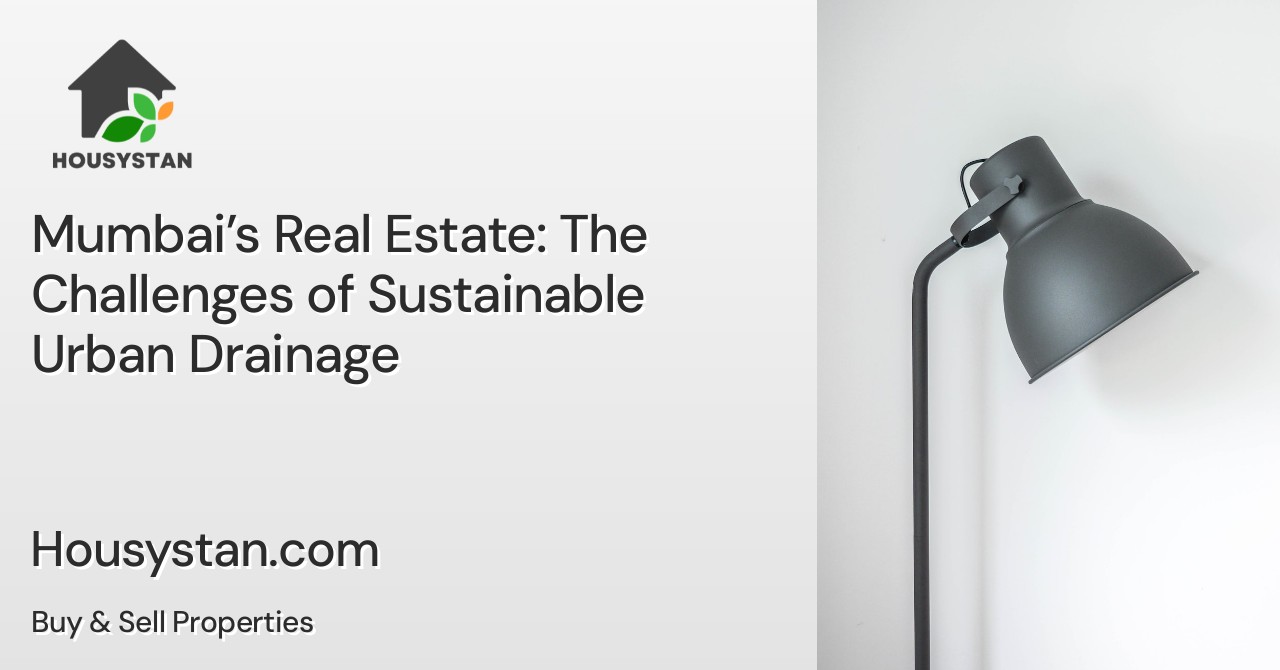Mumbai’s Real Estate: The Challenges of Sustainable Urban Drainage
Read latest blogs and articles from Housystan

The Information mentioned here was last updated on:
31/12/2025Mumbai, the financial powerhouse of India, is a city renowned for its vibrant culture, fast-paced lifestyle, and dynamic real estate market. However, as urban development continues to surge, one of the most pressing concerns facing this metropolitan hub is the implementation of sustainable urban drainage systems. Managing rainwater and preventing waterlogging remain persistent challenges, especially during the monsoon season. As new residential and commercial projects transform the skyline, effective drainage becomes crucial for both environmental preservation and long-term property value.
The unique geography of Mumbai, characterized by low-lying coastal zones and dense urban sprawl, amplifies the complexities of stormwater management. Rapid construction, shrinking green spaces, and inadequate planning have contributed to frequent flooding, affecting transportation, daily life, and local businesses. The city’s traditional drainage infrastructure often struggles to cope with intense rainfall, leading to disruptions and property damage. Sustainable solutions must be tailored to Mumbai’s specific topographical and climatic conditions to ensure lasting success.
Modern real estate developments in Mumbai are increasingly integrating eco-friendly drainage techniques. Developers are adopting innovative approaches, such as permeable pavements, green roofs, and rainwater harvesting systems, to reduce surface runoff and recharge groundwater. These sustainable practices not only mitigate flooding risks but also enhance the appeal of properties to environmentally conscious buyers. Regulatory bodies and the Brihanmumbai Municipal Corporation (BMC) have begun encouraging the inclusion of sustainable drainage features in new construction projects, reflecting a city-wide shift toward responsible urban growth.
- Verified Tenants/Buyers
- Unlimited Property Listing
- Zero subscription/charges fee
For investors and residents, understanding the importance of sustainable drainage in Mumbai is critical. Properties equipped with advanced water management systems offer greater resilience against climate change and unpredictable weather events. Additionally, projects that prioritize eco-friendly infrastructure align with global sustainability trends, attracting both domestic and international interest. As Mumbai evolves, prioritizing sustainable urban drainage will play a central role in safeguarding the city’s future, enhancing real estate value, and ensuring the well-being of its residents.